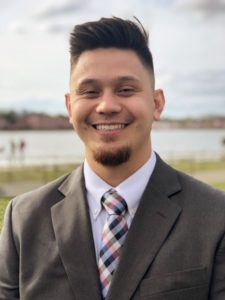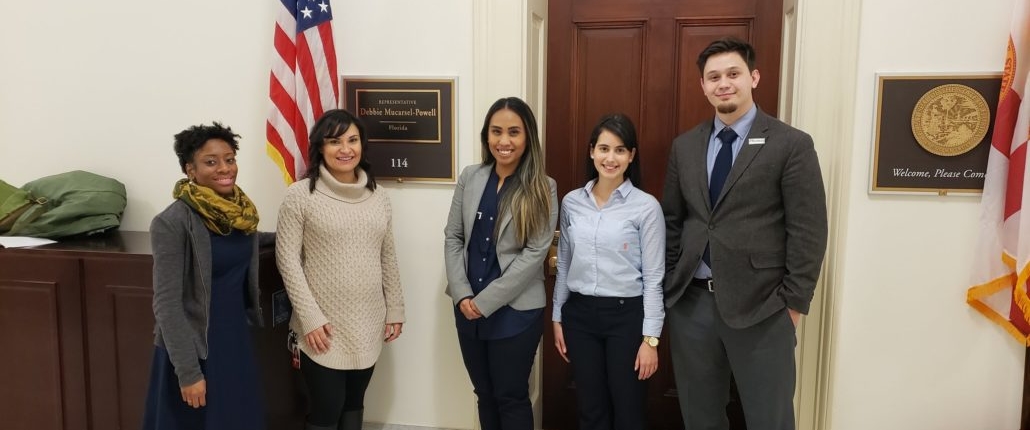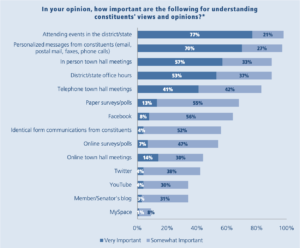By Adam Strong
The first time I met with a high-level policymaker, I was so nervous my neck actually went stiff. It was 2012, and I was meeting with then-Secretary of Education Arne Duncan, together with some of my fellow members of the OYUnited’s National Council of Young Leaders. For a moment, I was afraid I wouldn’t be able to move.
So what did I do? I took a deep breath and jumped into the conversation. After a few moments of stumbling on my words, I found sure footing on remarks I prepared and practiced ahead of time. The more I talked, the less anxiety I felt about talking, I was soon able to take a sip of water without seeing the cup visibly shake during the meeting. I never felt completely comfortable or ready, but rarely does anyone ever feel completely ready for what they are called to do. All you can do is prepare and face it head on.
I still get nervous, but now in my roles working with OYUnited and CIRCLE, I meet with Members of Congress and their staff pretty often.
Our federal policymakers in Congress need to hear from us – we can meet with them in DC or at home, in “in-District” (or local office) meetings. Here are some the things I’ve learned that I hope will help.
Why Meetings Matter
Should you meet with your elected Representatives in your district? Yes. Here’s why.
Meetings work. Meeting in person with your local representative can be one of the most effective ways to build awareness of issues you care about and persuade your local representative to take action in the way that they can. Being from the community and being able to talk about your experiences and give local context to the issues and your stances can provide a new perspective or nuance to a particular position that is exactly what they need to make a firm decision on something.
They help you build relationships with decision-makers. Meeting with your local representative is a great way to begin building a relationship with their office. Members of Congress spend a lot of time in Washington, DC, but they are also home working several times a year. And their local staff are there all year long.
Being a community leader isn’t just about one moment, but often means you continually lead and step up for your community when needed. As new issues or legislation arise, you want to be poised to reach out to the local staff person and make your needs and positions, and that of your community known.
In your first meeting with staffers in your local office, take a moment to ask some questions and learn about who they are on a personal level. You can start to build a relationship with them, where they know who you are and the communities you represent. The closer your relationship is, the more honest, authentic, and nuanced conversations you can have with them.
Legislators need your voice and perspective. Lawmakers often look to their constituents to inform them on what matters to them and the community, however, few take the time to schedule a meeting and actually engage in a conversation with their office. This trend means that your in-person meeting can be even more influential and have a great impact.
You can learn, too. Legislative staff are often the experts on where their boss stands in terms of policies, issues, and new initiatives. Sometimes the quickest way to learn about a particular issue or emerging initiative in your community is to meet with your local legislative office.
How to Set up an Meeting – and Make it a Success
- Find out who your representative is. Use this tool (all you need is your address).
- Find the local in-district office contact near you, rather than the DC contact information.
- Contact the local office to schedule a meeting.
- Don’t give up. Don’t be discouraged if you don’t get a confirmed meeting right away. Local legislative offices often get flooded with requests, site visit invitations, and questions. Persistence and patience are key.
- Prepare for your meeting. Have an ask in mind. Whatever is most appropriate, it could be to support a bill, look into a matter, ask the representative to try to garner support of his colleuges, invite them to a community event, etc. Bring any materials you need or that you want to share with your member of congress.
- Share (with permission). Ask if you can share and thank them on social media. You can even ask if you can take a picture – and if they have a Twitter, Facebook or Instagram account you can tag. Most of the time, they’ll be happy for you to share that. Tag their boss too.
- Finally: Thank them for their time! Office staff will likely give you their card. After your meeting, follow up and thank them for taking the time to talk with you.
Representatives and their staffers are people too, and as they say, “you can attract more flies with honey than vinegar.” Small acts of kindness goes along way.
If you feel nervous, it helps to talk to peers and get advice and suggestions, and to see meetings in action.
Here’s a video from some of our friends in California who recently met with Rep. Barbara Lee (D-CA) at her local office in Oakland, to talk about the Reconnecting Youth Campaign and urge Rep. Lee to support the campaign’s call to invest in pathways to jobs, training and education. (Learn more about the Reconnecting Youth Campaign.)
Do you have any questions? Reach out to me!
We want to hear about your meetings. Email us with a summary of how it went. Send pictures! Better yet, tag @OYUnited and #OpportunityYouth in your social media posts.
__
 Adam Strong is a founding member of OYUnited and member of OYUnited’s National Council of Young Leaders. A passionate advocate and lifelong learner, he has six years of experience in national policy advocacy, using his skills in policy analysis and communication & strategy he aims to influence policymakers to implement policies that increase economic mobility and decrease poverty in America.
Adam Strong is a founding member of OYUnited and member of OYUnited’s National Council of Young Leaders. A passionate advocate and lifelong learner, he has six years of experience in national policy advocacy, using his skills in policy analysis and communication & strategy he aims to influence policymakers to implement policies that increase economic mobility and decrease poverty in America.








